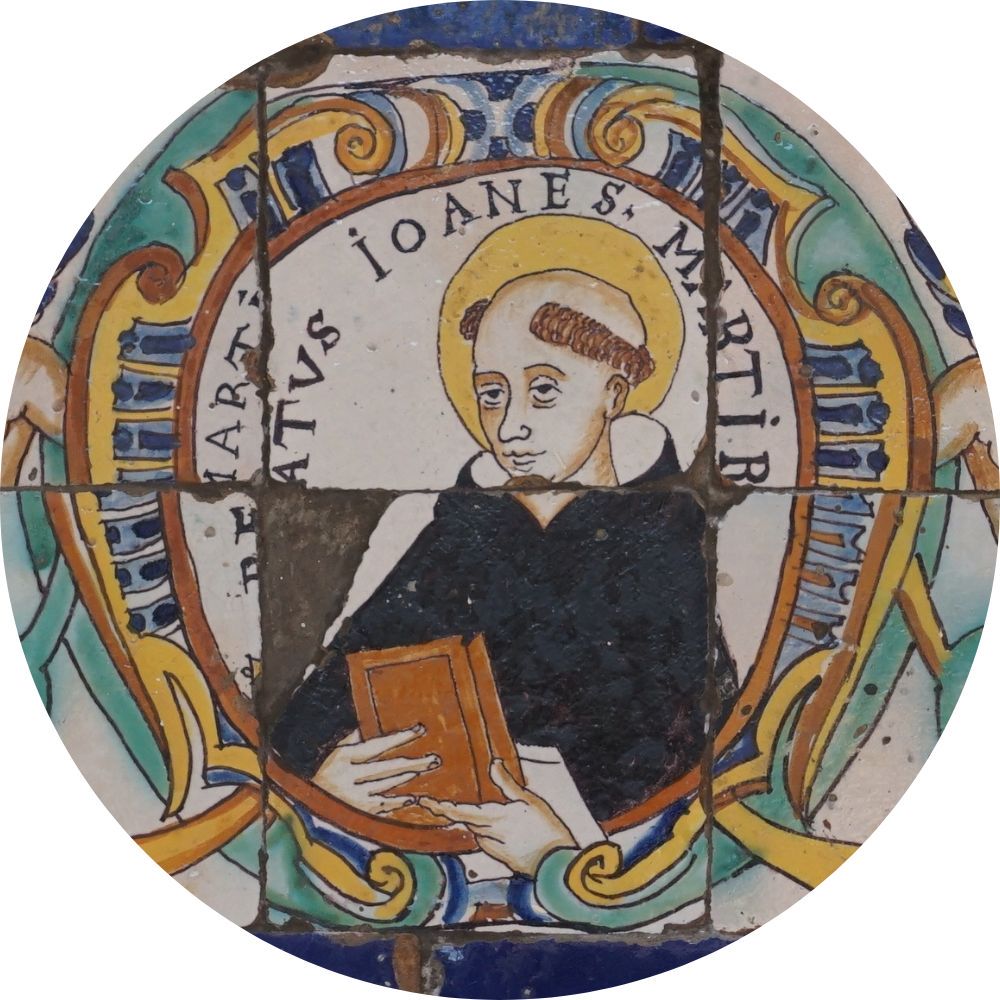John of Cologne
John of Cologne
(died in 1572)
John of Cologne, also known as John of Heer or John of Gorkum, was born in Germany; date of birth unknown. We don't know much about his life. All that is known is that he stayed in a priory in Cologne when he asked his superiors for permission to go to pastoral work in the Netherlands. The country was gripped by the Protestant movement, particularly Calvinism. John wanted to assist the Catholic clergy in opposing Calvinism. He was even a parish priest in Hoornaar. In June 1572, a group of Calvinists, known as "beggars of the sea" or Geuzen (from French les gueux - beggars) besieged and conquered the city of Gorkum (now Gorinchem) in the Netherlands. Some of the lay faithful, the parish priest and a group of Franciscan friars took refuge in the city's fortress, but the garrison to defend them was also broken up. Contrary to what had been promised in the capitulation negotiations, 11 Friars Minor, three diocesan priests and a regular canon of St. Augustine were captured.
On July 2, they were joined by Dominican John of Cologne, who was arrested on his way to Gorkum, where he was to administer the sacrament of baptism. He often came to this city to bring the sacraments to residents and prisoners. From June 26 to July 6, they were imprisoned in Gorkum and then taken to Dordrecht. From there they were transported to Brielle, where a pretend procession was organized. In prison they found two Premonstratensians and another diocesan priest. The prisoners supported the mockery of the people and debated with Calvinists, defending the real presence of Jesus in the Eucharist and the primacy of the Pope. On July 9, 1572, although Prince William of Orange ordered them to be freed, 19 of them were hanged in a shed near the Augustinian monastery of St. Elizabeth's on the orders of the leader of the Geuzen, Count Willem van der Mark of Lumley. Only three survived, who denied their faith in the presence of Christ in the Eucharist and the primacy of the Pope in the Church. The executioners also desecrated their corpses until a Catholic from Gorkum redeemed them for a suitable sum; they were buried in two pits dug near the execution site. Over time, the site became a pilgrimage destination.
John of Cologne and 18 companions were beatified by Pope Clement X on November 4, 1675, and canonized on June 29, 1867, by Bl. Pius IX. Their memorial falls on the day of their martyrdom - July 9. Their mortal remains are venerated in the shrine dedicated to them in Brielle, where they are deposited in a special urn that stands in front of the altar. Their relics are also in St. Nichola's church in Brussels. The remains of the martyrs are in an urn in front of the altar.
The main attributes of the holy martyrs of Gorkum are the monstrance, which refers to their defense of their faith in the sacrament of the Eucharist, and the palm and noose around their necks, which indicate their martyrdom by hanging. All of these attributes can be found in paintings depicting St. John of Cologne. However, they won't be found on the tiles in the San Domingo Monastery in Lima, where he is depicted with a book.
Bibliography:
- Estius G., Historiae Martyrum Gorcomiensium, Douai 1603.
- Osimo A. da, Storia dei 19 Martiri Gorcomiesi, Roma 1867.
- Laforet N. I., Les Martyrs de Gorcum, Louvain 1867.
- Meuffels H., Les Martyrs de Gorcum, Paris-Gabalda 1908.

